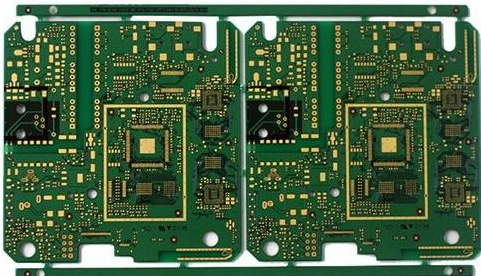SMT production placement machine classification
At present, there are many manufacturers of placement machines in the SMT industry, and their structures are also different, but according to the scale and speed, they can be roughly divided into large-scale high-speed machines (commonly known as "high-end machines") and medium-sized medium-speed machines (commonly known as "mid-range machines"). There are also small placement machines and semi-automatic/manual placement machines. The price of a mainframe is generally three to four times that of a medium-sized one. Manufacturers of large-scale high-speed placement machines mainly include Panasonic, ASM, Fuji, Yamaha, JUKI, Assembleon, etc.; manufacturers of medium-speed placement machines mainly include Hanhua, Mirae, Mydata, etc. Among them, Panasonic, Hanhua, Yamaha, and Fuji have the highest market share, and they are known as the "horse-driving" of the placement machine market.
SMT production placement machine classification
Whether for mainframe manufacturers or medium-sized machine manufacturers, the recommended SMT production line generally consists of two placement machines: a chip chip placement machine (commonly known as high-speed placement machine) and an IC component placement machine Machine (commonly known as high-precision placement machine), so that each perform its own responsibility, which is conducive to the highest placement efficiency of the placement machine. But now the situation is changing. Because many vendors have introduced multi-functional placement machines, it is possible that the SMT production line has only one placement machine. A multi-function placement machine can complete the placement of all components while maintaining a high placement speed, reducing investment. This type of placement machine is quite favored by small and medium-sized enterprises and scientific research institutes.

The current placement machine structure can be roughly divided into four types: boom type (also known as "arch type"), composite type, turret type and large parallel system.
The boom type machine is the most traditional placement machine, with good flexibility and accuracy, suitable for most components, high-precision machines are generally of this type, but its speed cannot be compared with the composite, turret and large Compared to parallel systems. Boom-type machines are divided into single-arm type and multi-arm type. The multi-arm placement machine developed on the basis of the single-arm type can double the work efficiency.
SMT patch processing technology and process issues
SMT patch processing technology, what issues do we need to understand? How can we fully understand the technology of patch processing? How can we fully understand the existence factors of these problems? Here are a few points for you:
1: Mounting of SMD processing: Its function is to accurately mount the surface mount components to the fixed position of the PCB. The equipment used is a placement machine, located behind the screen printing machine in the SMT production line.
2: Dispensing for patch processing: It drops glue onto the fixed position of the PCB, and its main function is to fix the components on the PCB. The equipment used is a glue dispenser, located at the forefront of the SMT production line or behind the testing equipment.
3: Screen printing for patch processing: its function is to print solder paste or patch glue onto the pads of the PCB to prepare for the soldering of components. The equipment used is a screen printing machine (screen printing machine), located at the forefront of the SMT production line.
4: The curing of the patch processing: its function is to melt the patch glue, so that the surface mount components and the PCB board are firmly bonded together. The equipment used is a curing oven, located behind the placement machine in the SMT production line.
SMT patch processing flow:
Mounting: Its role is to accurately mount surface mount components to a fixed position on the PCB. The equipment used is a placement machine, located behind the printing machine in the SMT production line.
Curing: Its function is to melt the patch glue, so that the surface mount components and the PCB board are firmly bonded together. The equipment used is a curing oven, located behind the placement machine in the SMT production line.
Reflow soldering: Its function is to melt the solder paste, so that the surface mount components and the PCB board are firmly bonded together. The equipment used is a reflow oven, located behind the placement machine in the SMT production line.
Printing: Its function is to print solder paste or patch glue onto the PCB pads to prepare for the soldering of components. The equipment used is a printing machine (a solder paste printing machine), located at the forefront of the SMT production line.
Dispensing: Since most of the circuit boards used now are double-sided patches, in order to prevent the components on the input surface from falling off due to the remelting of the solder paste during the second return to the furnace, a dispenser is installed on the input surface, which drops the glue to In the fixed position of the PCB, its main function is to fix the components on the PCB board. The equipment used is a glue dispenser, located at the forefront of the SMT production line or behind the testing equipment. Cleaning: Its function is to remove the solder residues such as flux that are harmful to the human body on the assembled PCB. The equipment used is a washing machine, and the location may not be fixed, it may be online or offline.
Inspection: Its function is to inspect the welding quality and assembly quality of the assembled PCB board. The equipment used includes magnifying glass, microscope, online tester (ICT), flying probe tester, automatic optical inspection (AOI), X-RAY inspection system, functional tester, etc. The location can be configured in a suitable place on the production line according to the needs of the inspection.
Rework: Its function is to rework the PCB boards that have failed to detect faults. The tools used are soldering irons, rework stations, etc.